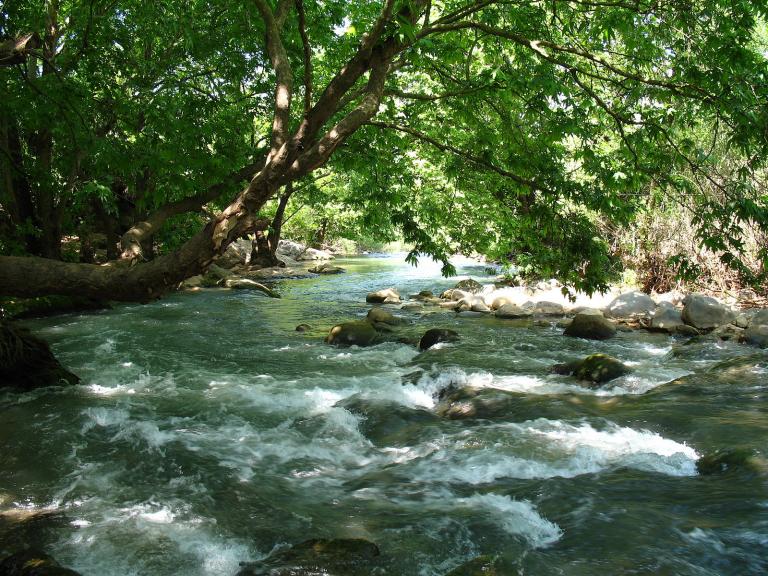
(Wikimedia Commons public domain image)
I often joke with people on the tours that we accompany in Israel, Egypt, and/or Jordan, or considering joining one of these tours, that they’ll need a vacation when we’re done with them. I don’t mean that as negatively as it may perhaps come across. What I do mean is that the time is filled, that we don’t waste precious moments, that people have paid a fair amount to come on these trips to places where there’s an enormous amount to be seen and learned, and that we try to make the days that they spend as rich as we can make them.
Yesterday (Saturday), for example, began with a wake-up call at 6:00 AM. By 7:30 AM, we were underway to Wadi al-Hamam, the “Valley of the Doves,” which is also known as the Wadi Arbel. This area, and especially the cave-riddled cliff that overlooks it from the south, was the site of fierce battles in various ancient wars, including the revolt of the Maccabees.
But that’s not the chief reason that we go there. The chief reason is the fact it was the main ancient road between Lake Kinneret (the Sea of Galilee) and Sepphoris and Nazareth — and, thus, a road that Jesus and his disciples often traveled. Magdala lies at the place where the valley opens upon the lake.
Our group walked a small distance up the Wadi, and I spoke to them there. Unlike so many places in the Holy Land, it remains unspoiled, natural, and probably more or less unchanged from the days of the Savior.
I also spoke to the group shortly thereafter as we took them to Tabgha — the name represents an Arabic corruption of the place’s earlier Greek name, Heptapegon (which means “Seven Fountains” or “Seven Springs”) — the traditional site, directly on the shore of the lake, of the miracle of the multiplication of loaves and fishes.
From there, we drove to the Mount of the Beatitudes, where I held forth at some length on certain topics related to the Sermon on the Mount, which was delivered near the place (if not directly there).
From the Mount of the Beatitudes, we drove considerably to the north, past the ancient site of Tel Dan and taking a quick break to walk down by the Hasbani River, the major tributary that feeds into the Jordan.
Then we dropped by the Banias Falls, which most of the group hiked down to visit.
A short distance from the Falls, we had lunch and then made a major visit to the site of ancient Caesarea Philippi. I spoke at some length there about the biblical and even theological significance of the site — mostly connected with Matthew 16 — but also about its importance as the location of the ancient battle for control of Palestine between the Seleucids and the Ptolemies, the two principal successor states to Alexander the Great. Most of the group hiked to the ruins of the palace of King Agrippa, nearby.
When we were finished there, we drove up onto the Golan Heights, to Mount Bental, the United Nations observation area from which we had a clear view into Syria, including the abandoned city of Quneitra and its post-Six-Day-War replacement. I lectured there on contemporary Middle Eastern politics, with emphasis on Syria, ISIS, and the recent conflict between Bashar al-Asad’s regime and its various enemies.
We were back at our hotel in Tiberias by about 6:30 PM, where we were able to grab a quick bite for dinner before a fireside at 7:30 PM at which all three bus-leaders — Jack Marshall, Brent Top, and I — spoke to the combined group of about 150 people.
A typically relaxing day!
Posted from Jericho, Palestinian Territory










